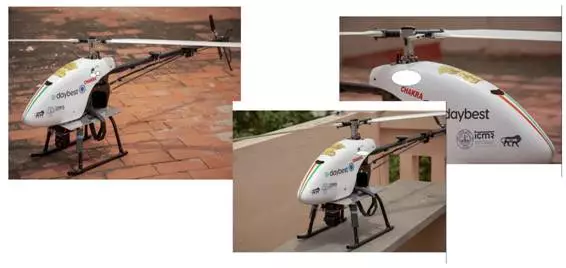Union Health Minister Mansukh Mandaviya on Monday launched the country’s Drone Response and Outreach initiative in the North East (i-Drone) to ensure that life-saving vaccines reach even those living in the remotest part of the country.
Describing it as a historic day, the minister said, “This is for the first time that a "Made in India' drone has been used in South Asia to transport COVID vaccine over an aerial distance of 15 kms in 12-15 mins from the Bishnupur district hospital to Loktak lake, Karang island in Manipur for administration at the primary health centre. The actual road distance between these locations is 26 k.m. Today, 10 beneficiaries will receive the first dose and 8 will receive the second dose.”
The initiative will facilitate vaccine delivery to tough and hard-to-reach terrains of India and ensure that everyone is vaccinated.
Also read: Total number of Covid-19 vaccine doses administered in India crosses 90 crore mark
The minister said, “India is a home to geographical diversities and drones can be used to deliver essentials to the last mile. We can use drones in delivering important life-saving medicines, collecting blood samples. This technology can also be used in critical situations and may prove a game changer in addressing the challenges in health care delivery, particularly health supplies in difficult areas.”
Currently, the drone-based delivery project has been granted permission for implementation in Manipur and Nagaland, as well as the Union Territory of Andaman and Nicobar Islands.
Incorporating such drone technologies, with flights beyond the visual line of sight, into the national programmes would help expedite the delivery of other vaccines and medical supplies as well, he added.
The Indian Council of Medical Research (ICMR) had conducted an initial study in collaboration with Indian Institute of Technology, Kanpur to test the capacity of drones to carry and transfer vaccines safely.
The study was conducted in Manipur, Nagaland and Andaman and Nicobar. These studies provided promising results on the basis of which the Ministry of Civil Aviation and Directorate General of Civil Aviation (DGCA) and other regulatory authorities have granted permission to fly drones beyond the Visual Line Of Sight.




















